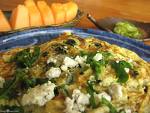Happy Monday to all of you!
Sorry for the silence, I was in Boston for a sports nutrition conference, promoting the Nordic Naturals line of fish oils. I've been sidelined from my half marathon training with a cranky knee, and it was so nice to get off of the elliptical trainer, get outside, and walk along the Charles River to and from my hotel and the conference!
Something I was very happy to see, throughout the conference, was the emphasis on nuts in general as a healthy food. I've been frustrated for a long, long time that the walnut people seemed to be the only nut commodity board with media contacts. Not that I don't like walnuts, but there's nothing wrong with other nuts as well.
I did an analysis for an article a few years ago, in which I compared the ratios of beneficial fats (omega-3's and monounsaturated) to potentially detrimental fats (omega-6's and polyunsaturated). And when they were all lined up in terms of most beneficial to least beneficial…walnuts actually turned up at the bottom of the list. Macadamias came out on top!
I use that analysis in my trainings, and dietitians will always immediately say,"But macadamias are so high in fat." Precisely. But it's the kind of fat that keeps us healthy. Lucky for me…my very favorite way to have nuts is macadamia nuts roasted in coffee, the way they fix them in Hawaii.
Anyway…(I tend to get distracted in this blog, don't I?)…
…one of the presentations showed data for macadamias, pecans, and pistachios, suggesting that they, too, are good foods to include in an anti-inflammatory (aka anti-PCOS and pro-fertility) diet. Nuts, in addition to good fats, have a variety of antioxidants that can delay and prevent aging and help fight stress. I even learned that the green part of pistachios contains lutein, which makes them good for eye health. Who knew a food so fun to eat would also be so helpful to my health?
Of course, there's a limit to how many nuts can be healthy, and fat has calories, no matter where it comes from. But if you're reaching for a handful of pistachios instead of a bag of Fritos, it's nice to know you're also reaching for better health.
So this week…go nuts!


